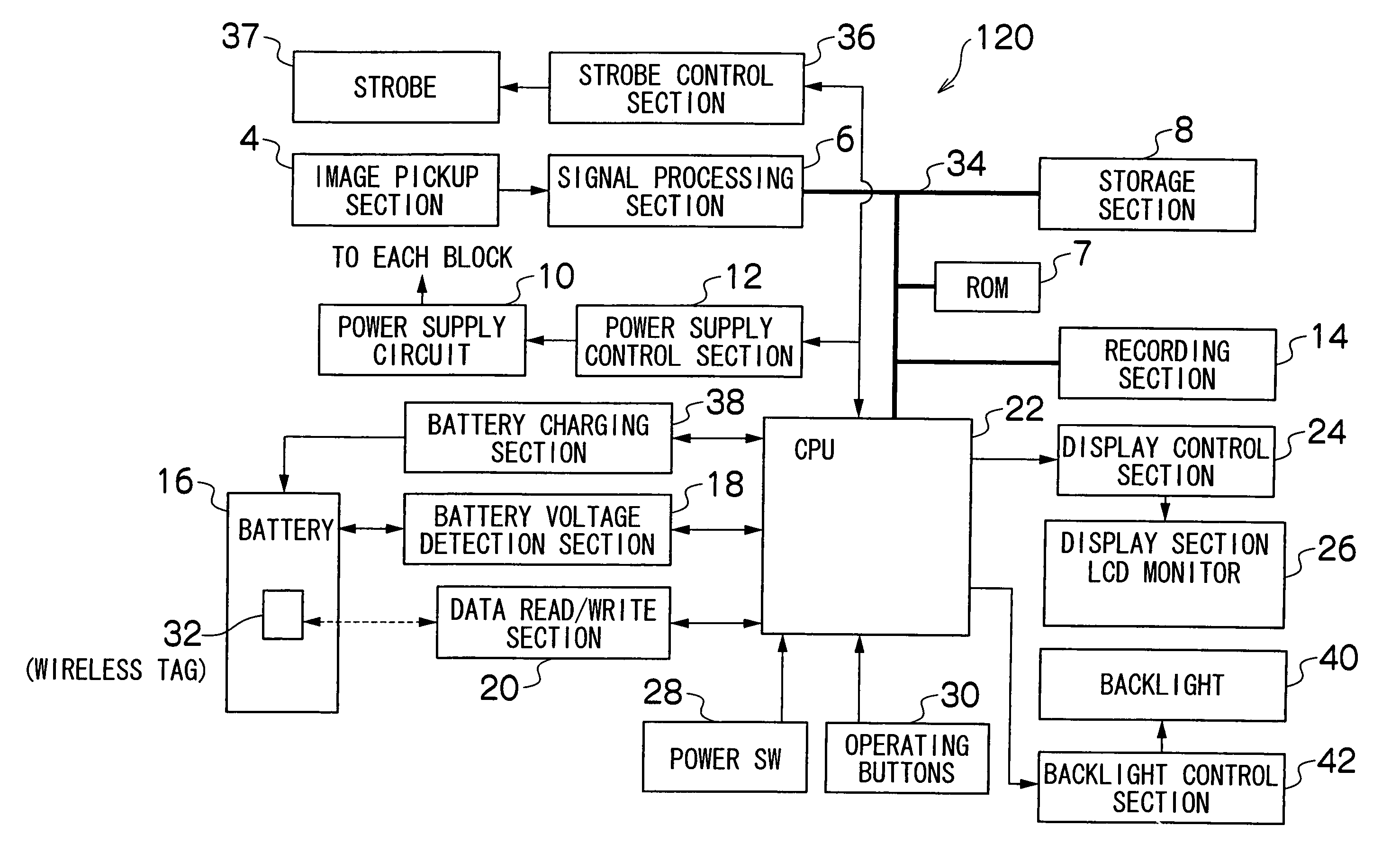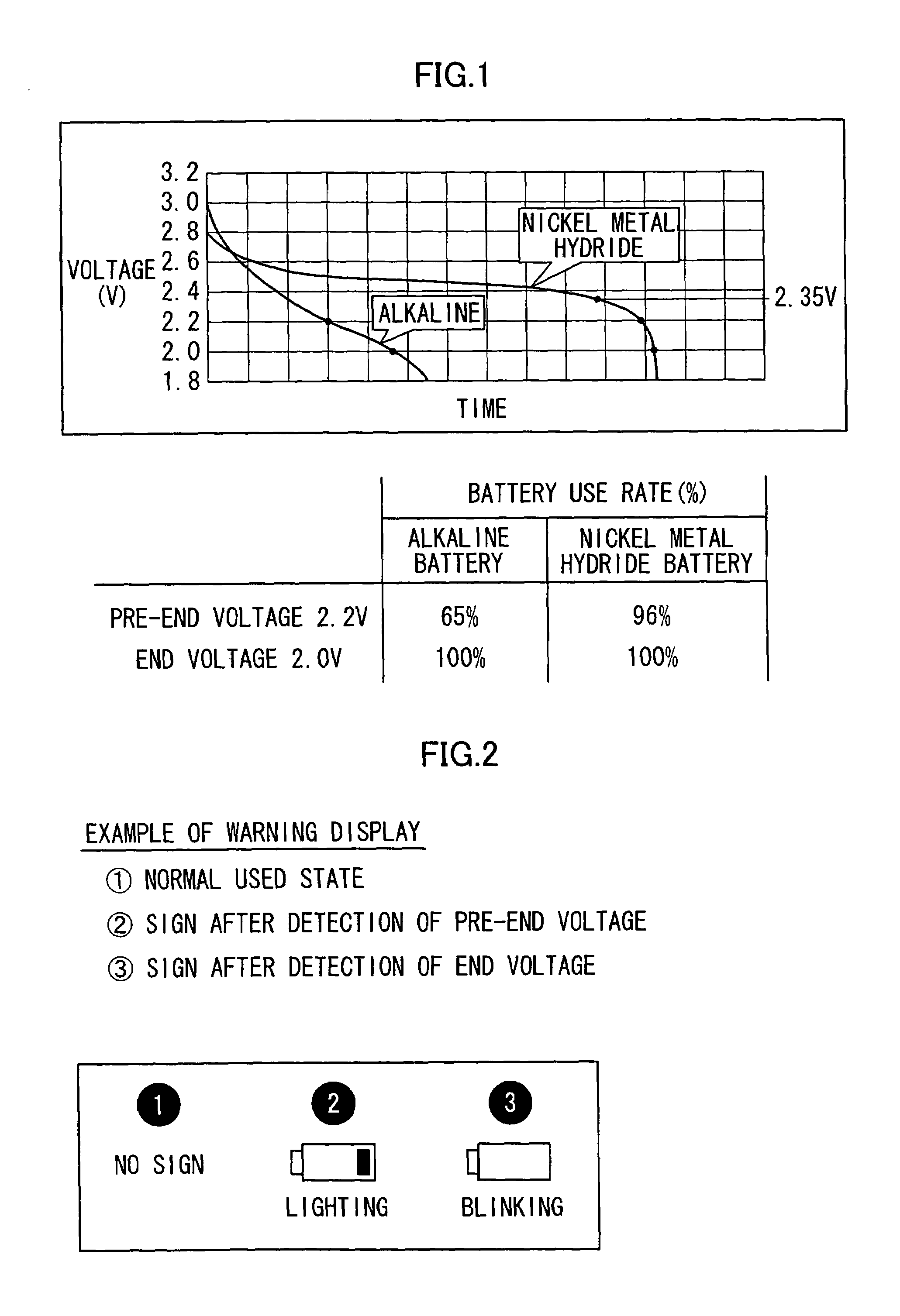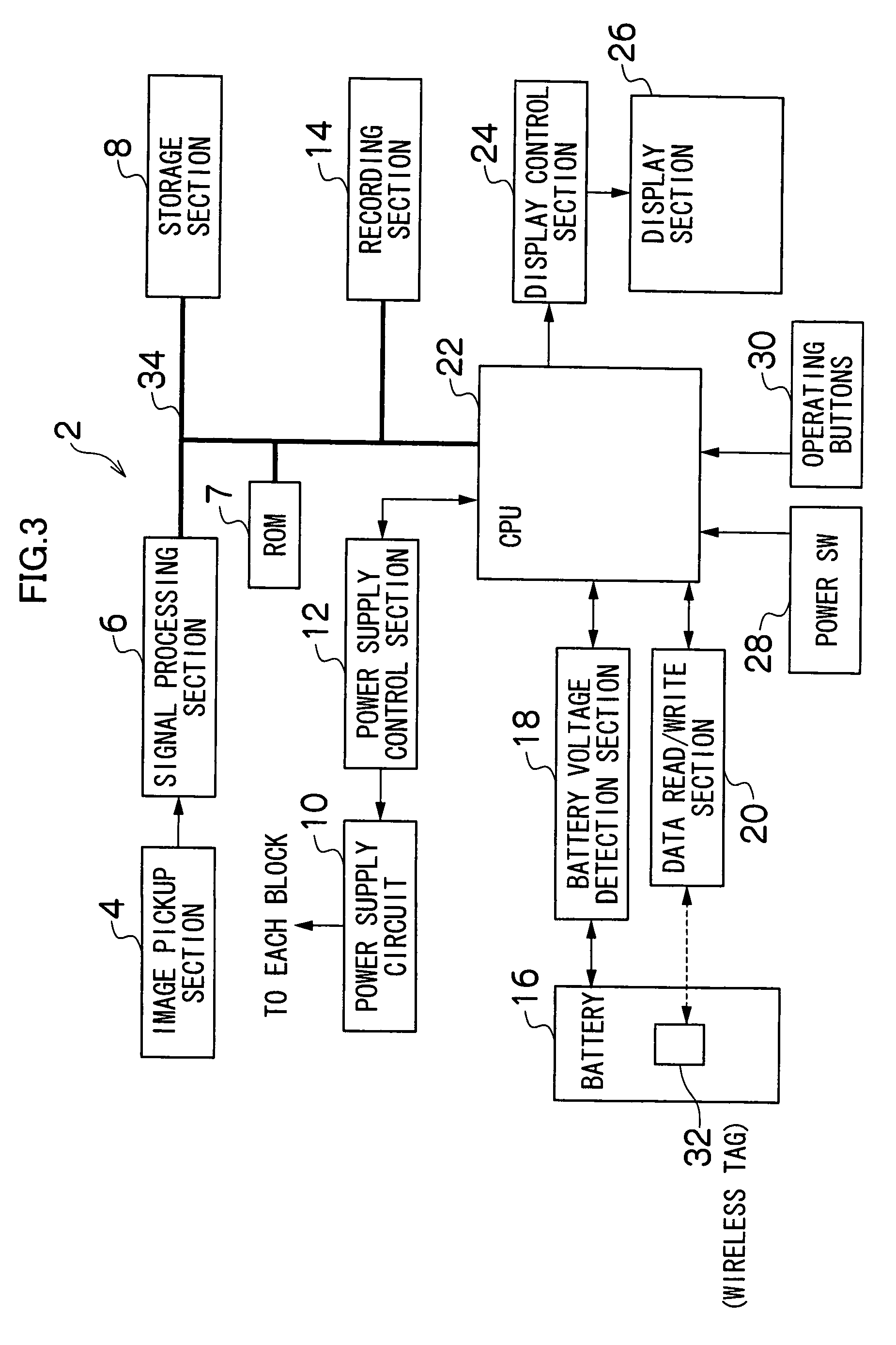Portable electronic appliance with a battery having a wireless tag containing battery information
a wireless tag and electronic appliance technology, applied in the field of portable electronic appliances and batteries, can solve the problems of battery life differences, electrical appliances becoming inability to perform photography immediately, energy warning, etc., and achieve the effects of reducing power consumption, increasing battery operating time, and automatically controlling the power consumption of portable electronic appliances
- Summary
- Abstract
- Description
- Claims
- Application Information
AI Technical Summary
Benefits of technology
Problems solved by technology
Method used
Image
Examples
first embodiment
[0056]FIG. 3 is a block diagram of the digital camera 2 of the present invention.
[0057]The camera 2 is a digital camera having image recording and reproduction functions. A central processing unit (CPU) 22 performs overall control of the operation of the entire camera 2. The CPU 22 functions as a control device which controls the camera system in accordance with a predetermined program and as an warning generation device which generates battery remaining energy warning information according to a kind of battery identified.
[0058]Various sorts of data necessary for the program and control executed by the CPU 22 are stored in a read-only memory (ROM) 7 connected to the CPU 22 via a bus 34. The ROM 7, which is a nonvolatile storage device, may be non-rewritable one or a rewritable one such as an electrically programmable erasable read-only memory (EEPROM).
[0059]A storage section 8 is used as a program loading area and a computation work area for the CPU 22 and is also used as an area fo...
second embodiment
[0109]FIG. 7 is a block diagram showing the digital camera 120 of the present invention.
[0110]The camera 120 is a digital camera having image recording and reproduction functions. A central processing unit (CPU) 22 performs overall control of the operation of the entire camera 120. The CPU 22 functions as a control device which controls the camera system in accordance with a predetermined program and as a control command generation device which performs such control as to reduce the power consumption of the digital camera 120 according to a kind of battery identified.
[0111]The program and control executed by the CPU 22, various sorts of data necessary for control, etc., are stored in a ROM 7 connected to the CPU 22 via a bus 34.
[0112]A storage section 8 is used as a program loading area and a computation work area for the CPU 22 and is also used as an area for temporarily storing image data and audio data.
[0113]The camera 120 is provided with operating buttons 30 including a mode se...
third embodiment
[0157]In the third embodiment, an warning is automatically displayed on the digital camera according to the kind of battery and the number of charging cycles to enable a user to easily grasp the battery use limit and to prepare a new battery without mistaking a degraded state of the battery for a malfunction of the camera. In a case where the digital camera is used until the battery use limit is exceeded, a low-power-consumption setting is made to increase the operating time of the battery and to enable use of the battery for a while even after the user has forgotten to change the battery.
[0158]In the description of the third embodiment, three methods have been mentioned as a power control setting in step 260. However, a combination of two of the above-described three methods may be used.
[0159]A setting may also be made according to a user's preference with respect to step 260 such that the setting is not automatically changed in step 260.
[0160]If information on the number of batter...
PUM
| Property | Measurement | Unit |
|---|---|---|
| voltage | aaaaa | aaaaa |
| voltage | aaaaa | aaaaa |
| voltage | aaaaa | aaaaa |
Abstract
Description
Claims
Application Information
 Login to View More
Login to View More - R&D
- Intellectual Property
- Life Sciences
- Materials
- Tech Scout
- Unparalleled Data Quality
- Higher Quality Content
- 60% Fewer Hallucinations
Browse by: Latest US Patents, China's latest patents, Technical Efficacy Thesaurus, Application Domain, Technology Topic, Popular Technical Reports.
© 2025 PatSnap. All rights reserved.Legal|Privacy policy|Modern Slavery Act Transparency Statement|Sitemap|About US| Contact US: help@patsnap.com



